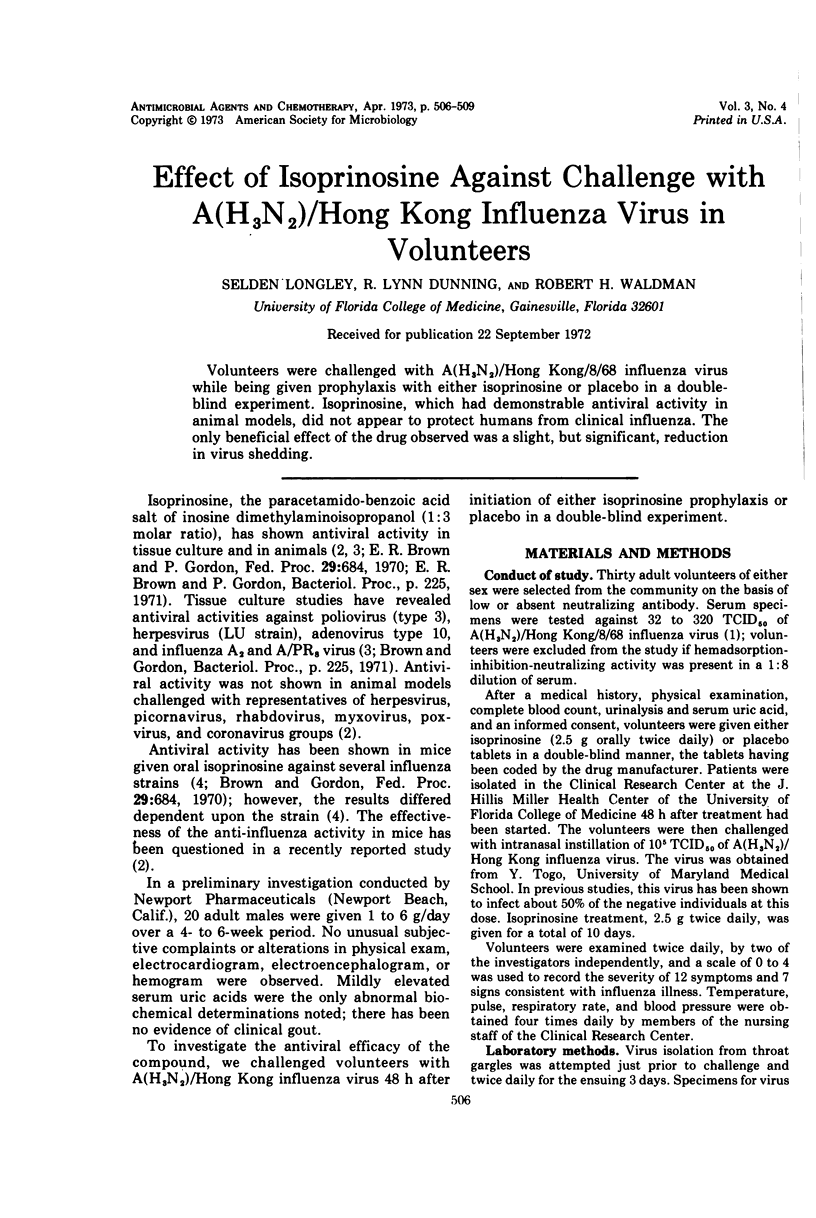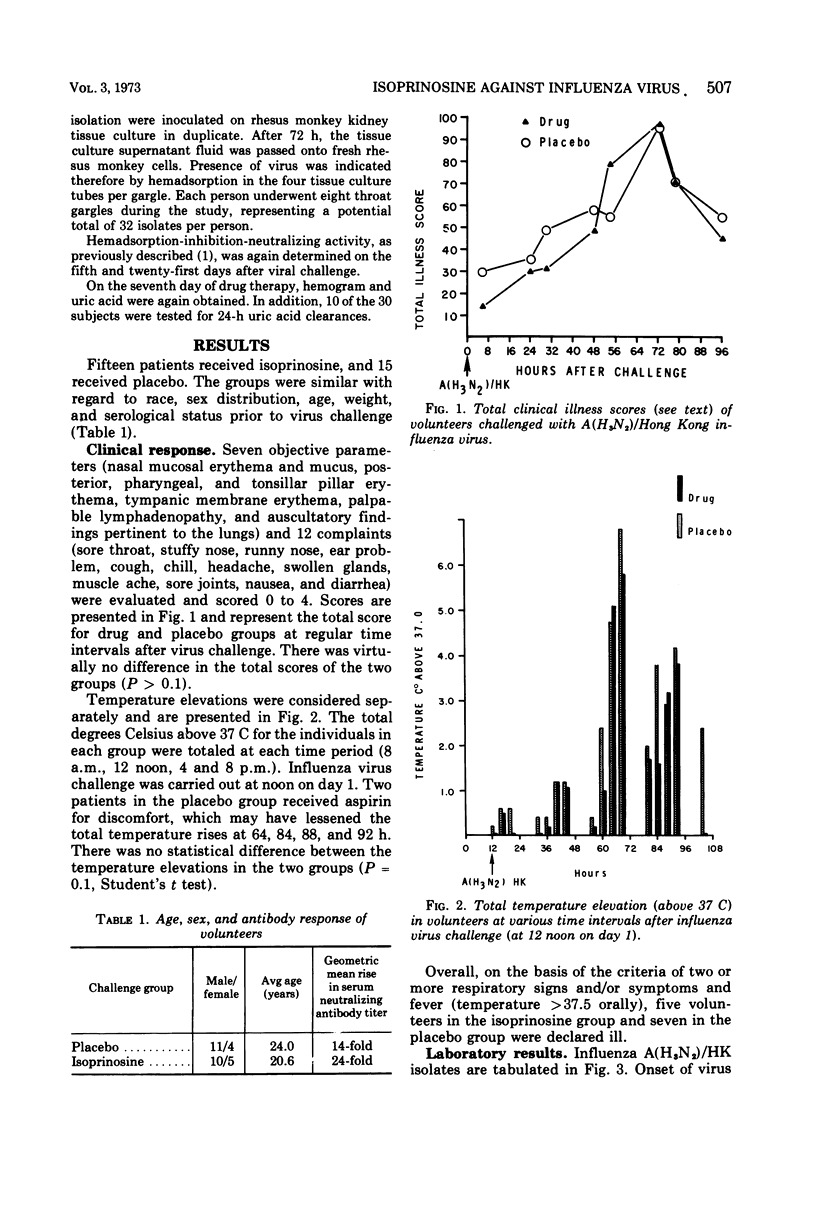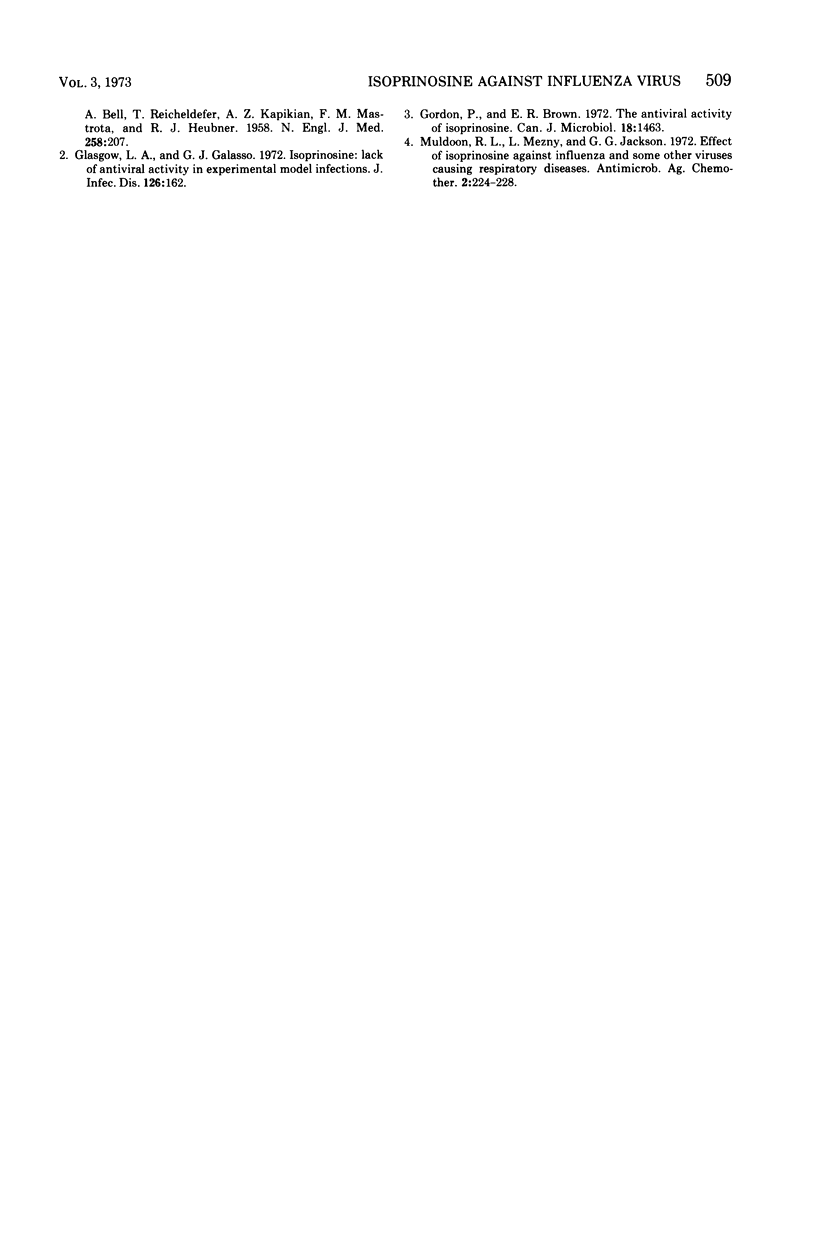Abstract
Volunteers were challenged with A(H3N2)/Hong Kong/8/68 influenza virus while being given prophylaxis with either isoprinosine or placebo in a double-blind experiment. Isoprinosine, which had demonstrable antiviral activity in animal models, did not appear to protect humans from clinical influenza. The only beneficial effect of the drug observed was a slight, but significant, reduction in virus shedding.
Full text
PDF



Selected References
These references are in PubMed. This may not be the complete list of references from this article.
- CHANOCK R. M., PARROTT R. H., COOK K., ANDREWS B. E., BELL J. A., REICHELDERFER T., KAPIKIAN A. Z., MASTROTA F. M., HUEBNER R. J. Newly recognized myxoviruses from children with respiratory disease. N Engl J Med. 1958 Jan 30;258(5):207–213. doi: 10.1056/NEJM195801302580502. [DOI] [PubMed] [Google Scholar]
- Glasgow L. A., Galasso G. J. Isoprinosine: lack of antiviral activity in experimental model infections. J Infect Dis. 1972 Aug;126(2):162–169. doi: 10.1093/infdis/126.2.162. [DOI] [PMC free article] [PubMed] [Google Scholar]
- Gordon P., Brown E. R. The antiviral activity of isoprinosine. Can J Microbiol. 1972 Sep;18(9):1463–1470. doi: 10.1139/m72-224. [DOI] [PubMed] [Google Scholar]
- Muldoon R. L., Mezny L., Jackson G. G. Effect of isoprinosine against influenza and some other viruses causing respiratory diseases. Antimicrob Agents Chemother. 1972 Sep;2(3):224–228. doi: 10.1128/aac.2.3.224. [DOI] [PMC free article] [PubMed] [Google Scholar]


